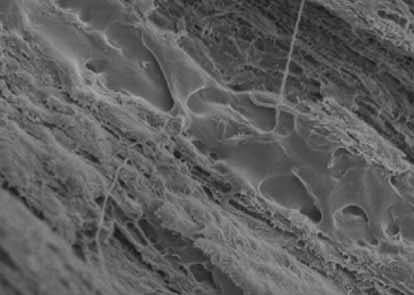 Polylactic acid (PLA) is a renewably sourced plastic material notorious for its poor mechanical properties. To make up for this, composites of PLA with many types of reinforcing materials have been produced, often creating additional problems such as partly reducing the renewable character of the final composite.
Polylactic acid (PLA) is a renewably sourced plastic material notorious for its poor mechanical properties. To make up for this, composites of PLA with many types of reinforcing materials have been produced, often creating additional problems such as partly reducing the renewable character of the final composite.
Now Larsson et al., in an article published in the Journal of Applied Polymer Science, have strengthened PLA with cellulose nanofibers by a process that overcomes the incompatibilities between hydrophilic fibrils and hydrophobic matrix. The two ingredients are mixed as aqueous suspensions, with a method similar to papermaking, to achieve good dispersion also at very high content of nanofibers.
This is the first time PLA has been mixed with cellulose fibers of such dimensional uniformity, obtained by a process that is close to commercial scale. The good dispersion and high uniformity of the fibers generate a material that shows the highest mechanical properties, such as strength and resistance to fracture, to date for this type of composite, which could perhaps be used in packaging applications. Renewable plastics are finally useful, besides being good for the environment.

















